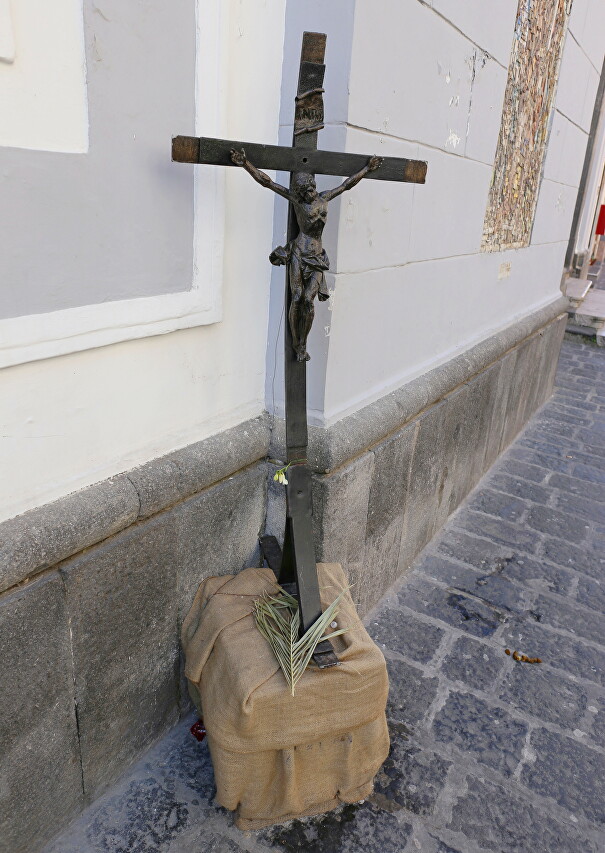Church of Santa Maria di Loreto, Forio
The Basilica of the blessed virgin of Loreto (Chiesa Santa Maria di Loreto), founded in the early 14th century, is located in the center of Forio, at the intersection of Corso Avvocato Francesco Regine and Via Roma (on the map). The history of the сhurch began with the construction of a small chapel built by fishermen. a century and a half later, it was significantly expanded and by 1580 the facade had acquired a modern outline.
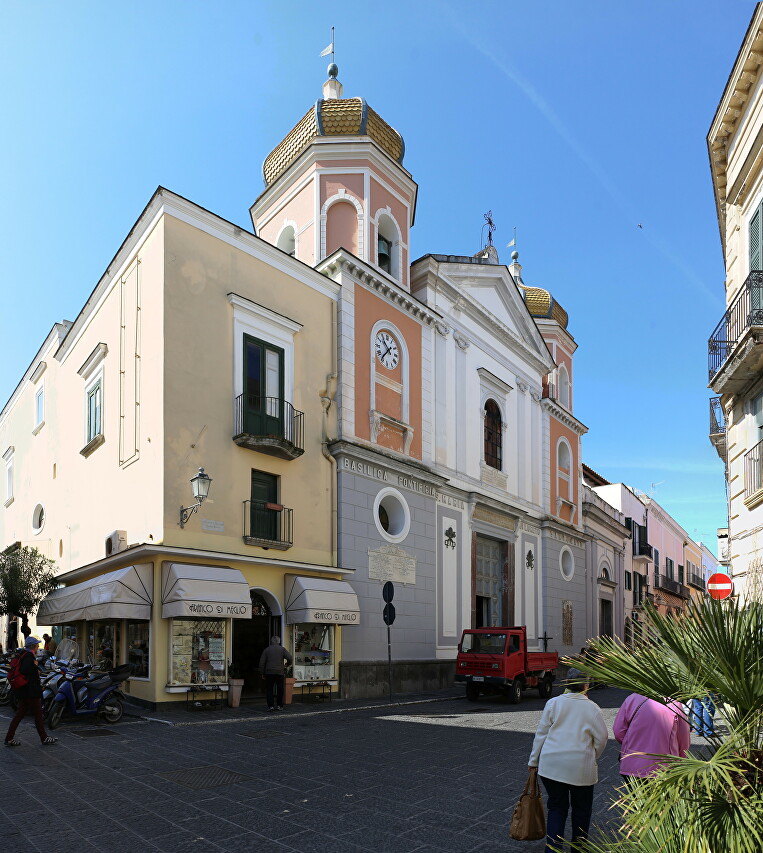
The population of Forio quickly and in the 18th century the church no longer held all the parishioners. Then a large-scale reconstruction was initiated, lasting for almost a hundred years. As a result, the main nave is significantly lengthened, receiving a new transept and apse. In 1731, a bell tower with a clock was built.
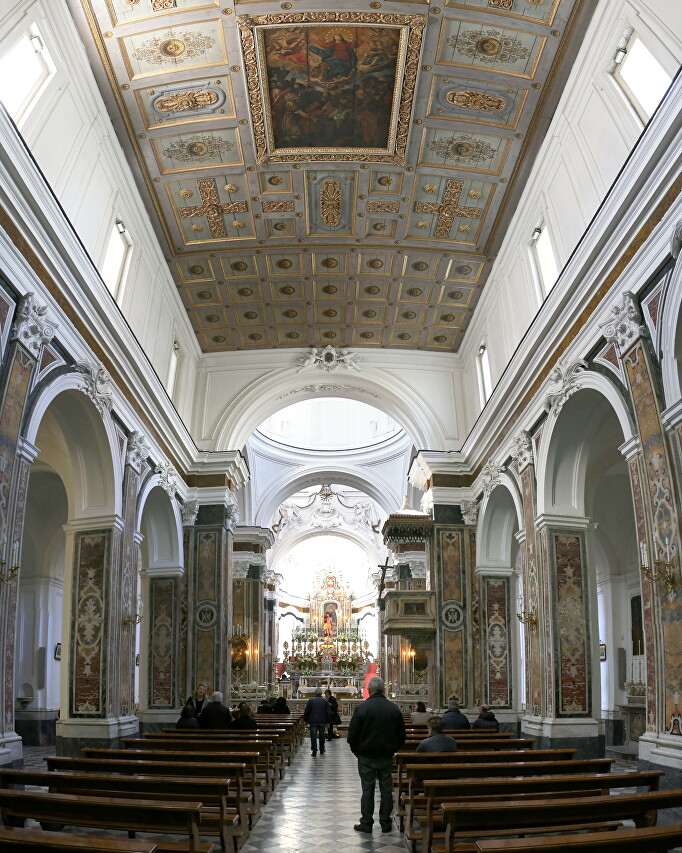
The central cavern has the shape of a Latin cross with 4 arches that divide 3 naves, the walls and ceilings are decorated with a Baroque replica, paintings made by local artists.
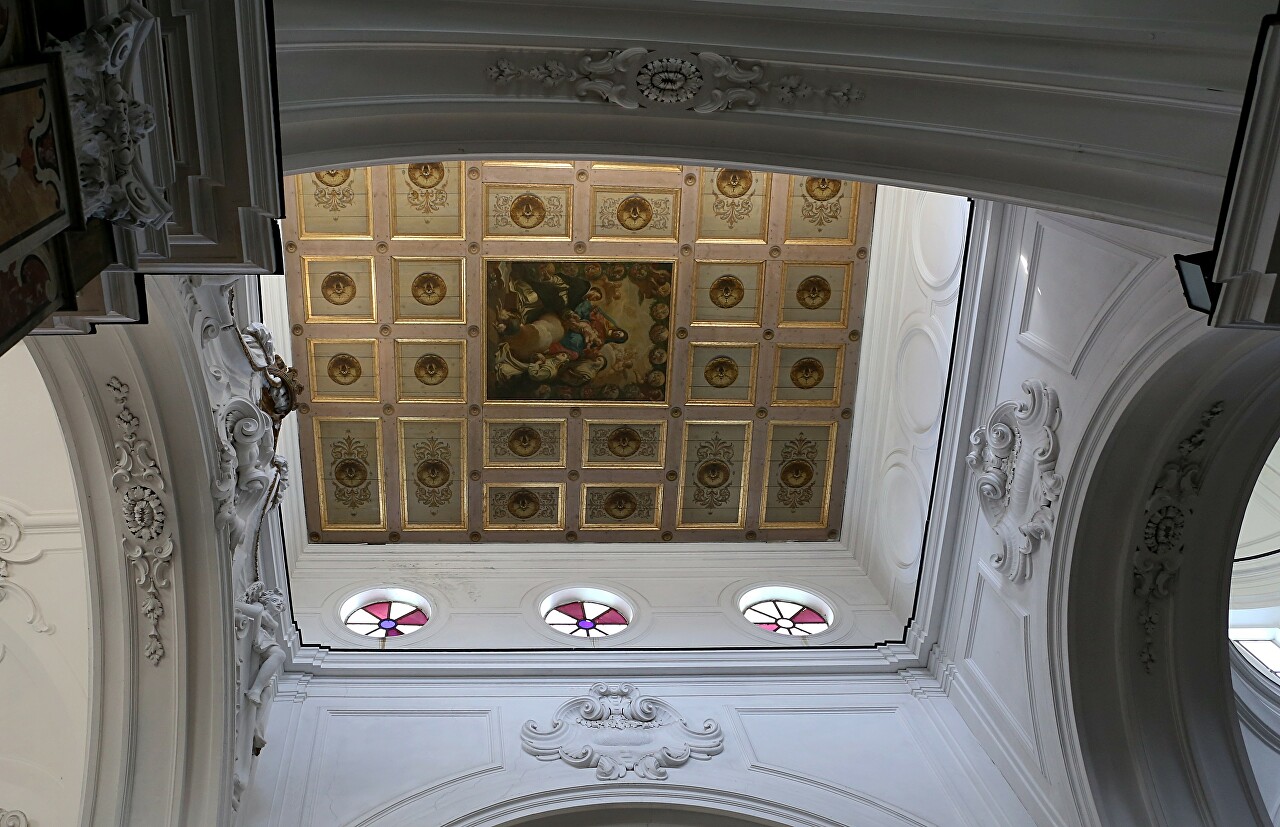
By 1785, the interior was completed with magnificent panels of multicolored Genoese marble by the master Gaetano Sacco.

At the same time, a new ceiling was completed, decorated with gilded moldings.
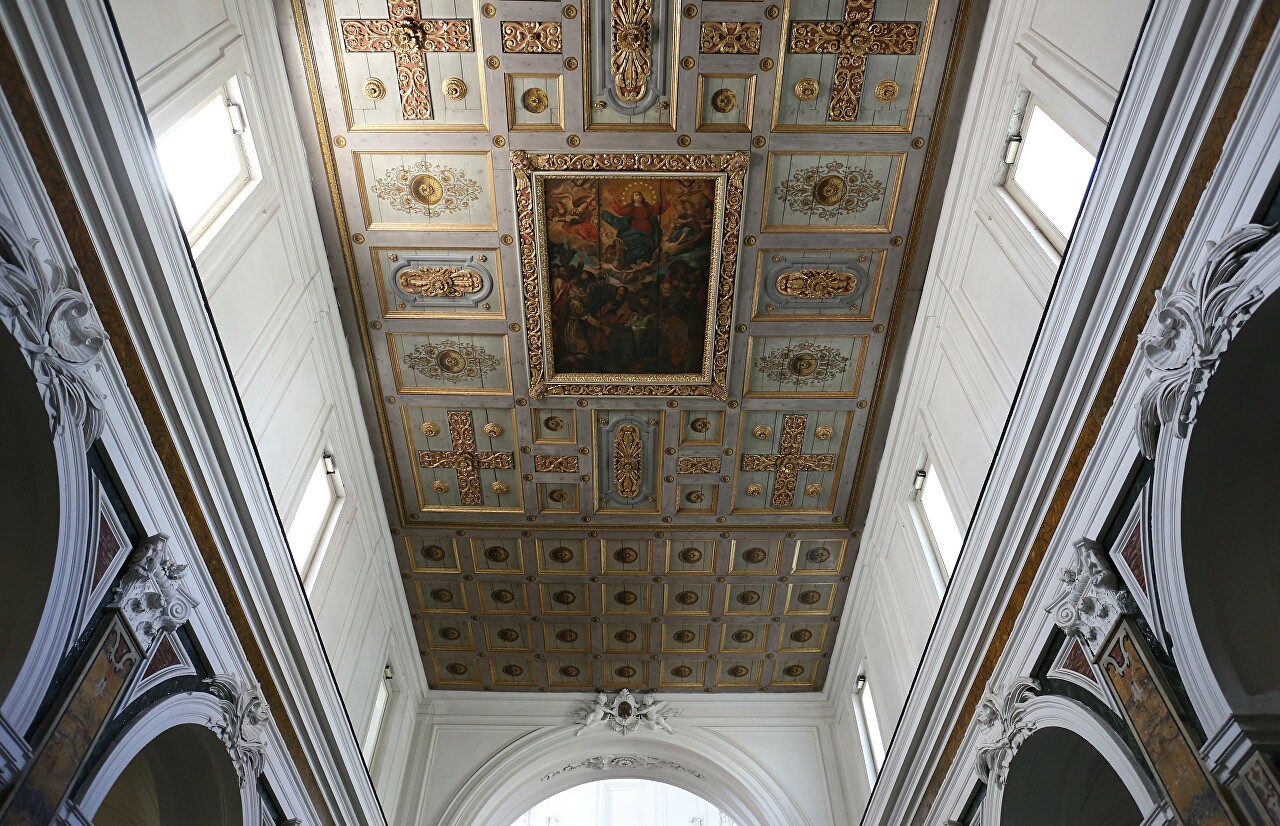
In 1755, the new altar was completed by local sculptor Lorenzo Vaccaro and marble master Gaetano Sacco. The interior walls of the altar are decorated with paintings by the artist Di Spigna, depicting scenes from the life of the virgin of Loreto. The renovated church was opened on June 29, 1787.
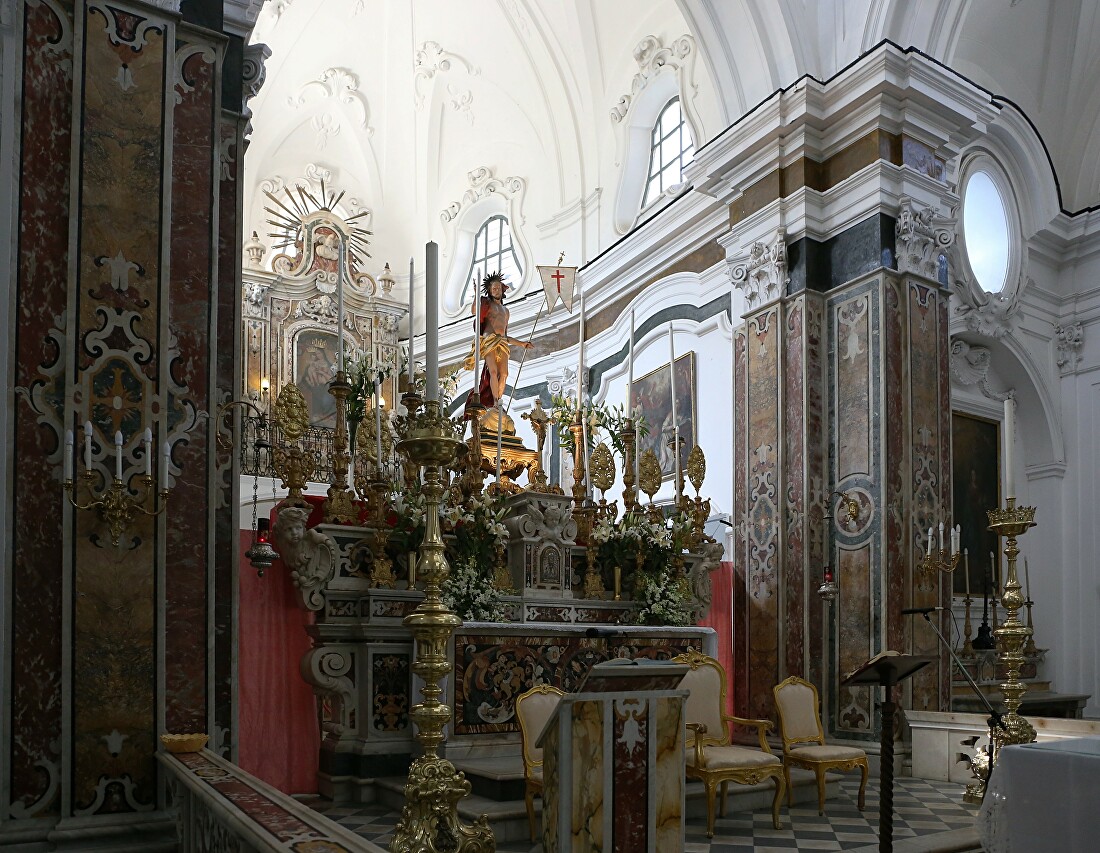
In one of the chapels on the left side of the church, there is a preserved altar of the Madonna of the Rosary, dated 1581.

The lavish decoration was facilitated by the generosity of local fishermen, who gave a quarter of their time to expand and maintain the church catch. Thanks to this, the interiors of the 18th century in excellent condition have been preserved to our time.
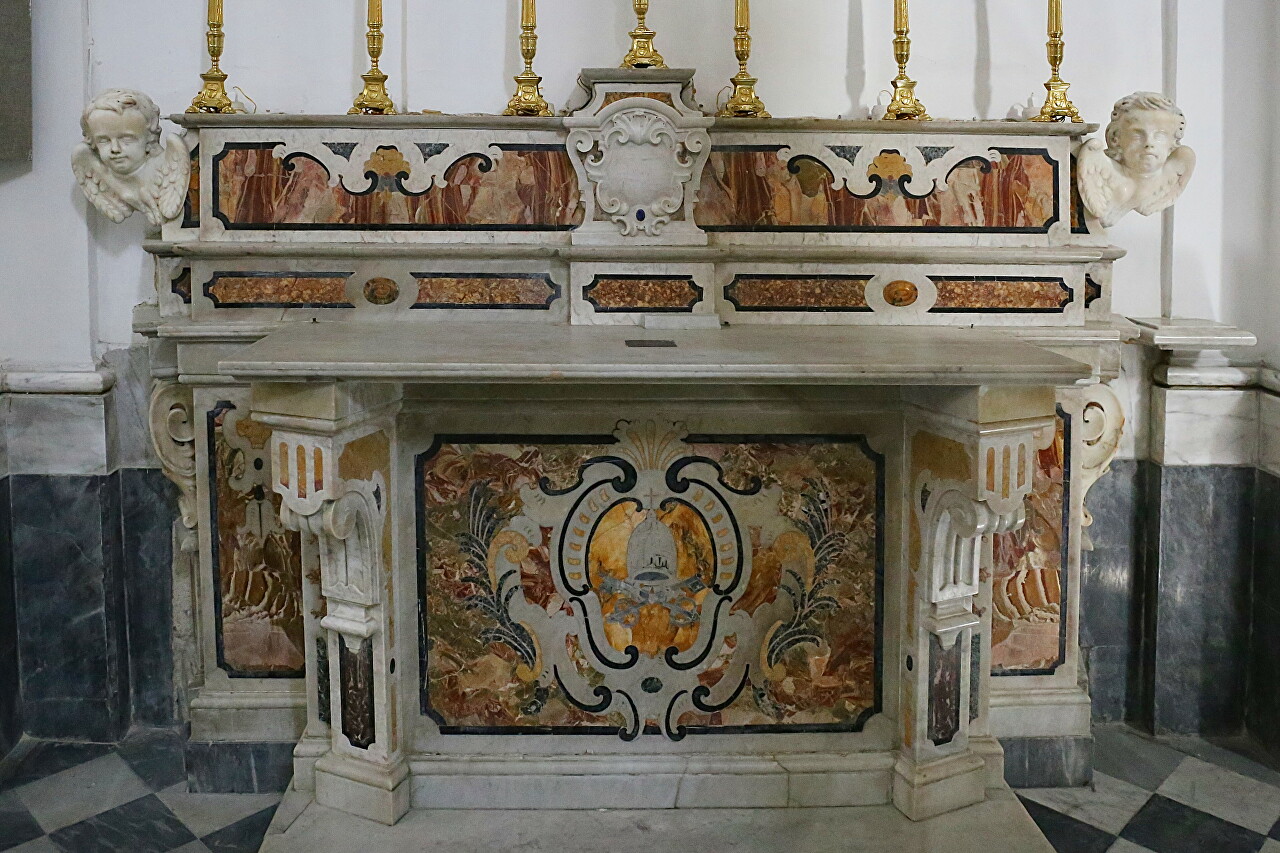
For a century, the church has been a hotbed of charity. Back in 1596, a hospital for the poor was built at the temple, which lasted until 1962. The building now houses the Museum of religious art, which was opened in 2012. You can get to the Museum by going up the stairs on the left wall of the basilica, facing Via Roma.
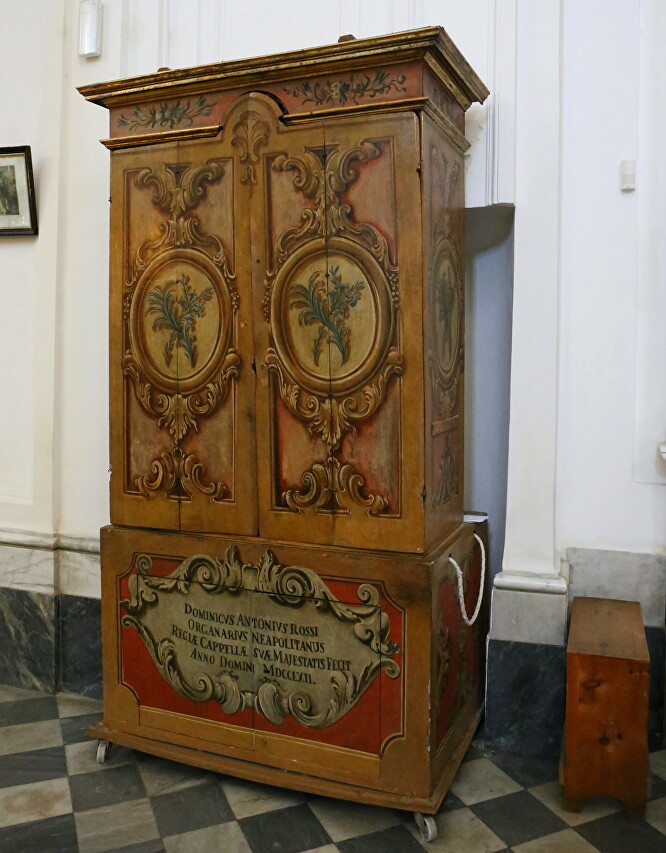
I was in the church early in the morning and a funeral ceremony was taking place in the temple, there was a coffin in front of the altar, and mourners were sitting on the benches.
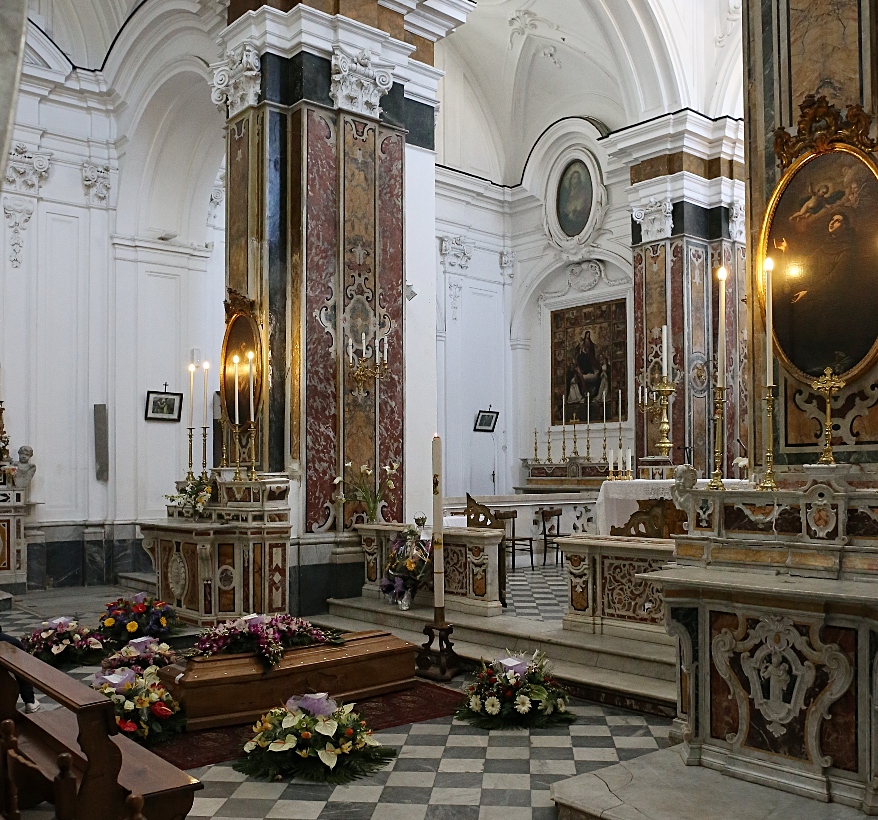
On the facade of the temple, to the right of the entrance, we see a mosaic made by the German graphic artist Eduard Barge, depicting St. Vitus, the patron Saint of the city. This work is a sign of gratitude to the island, which became his home during the time of fascism and the prohibition of so-called "degenerate art".
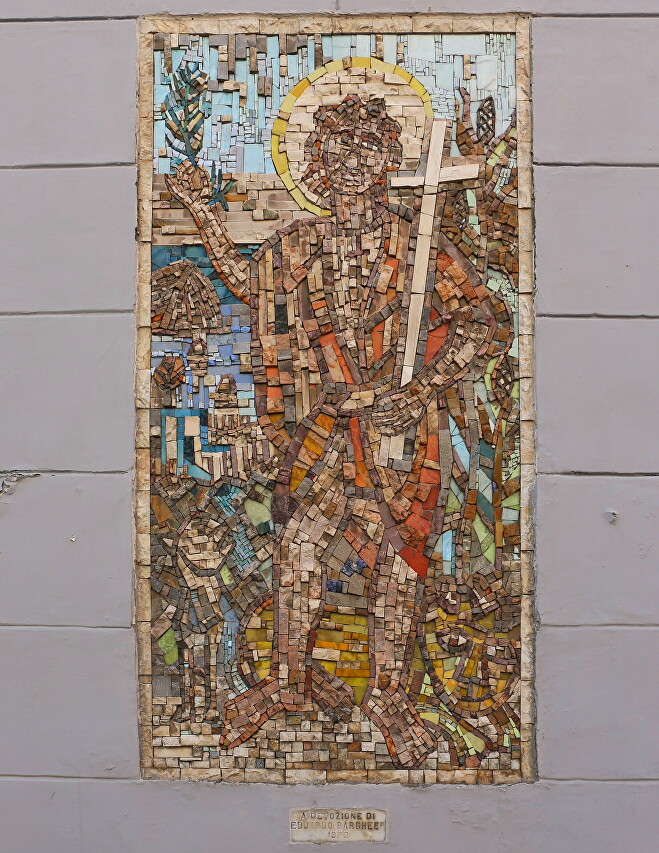
There was a metal crucifix at the entrance, also of modern design, like the One I had seen at the Church of San Gaetano.
